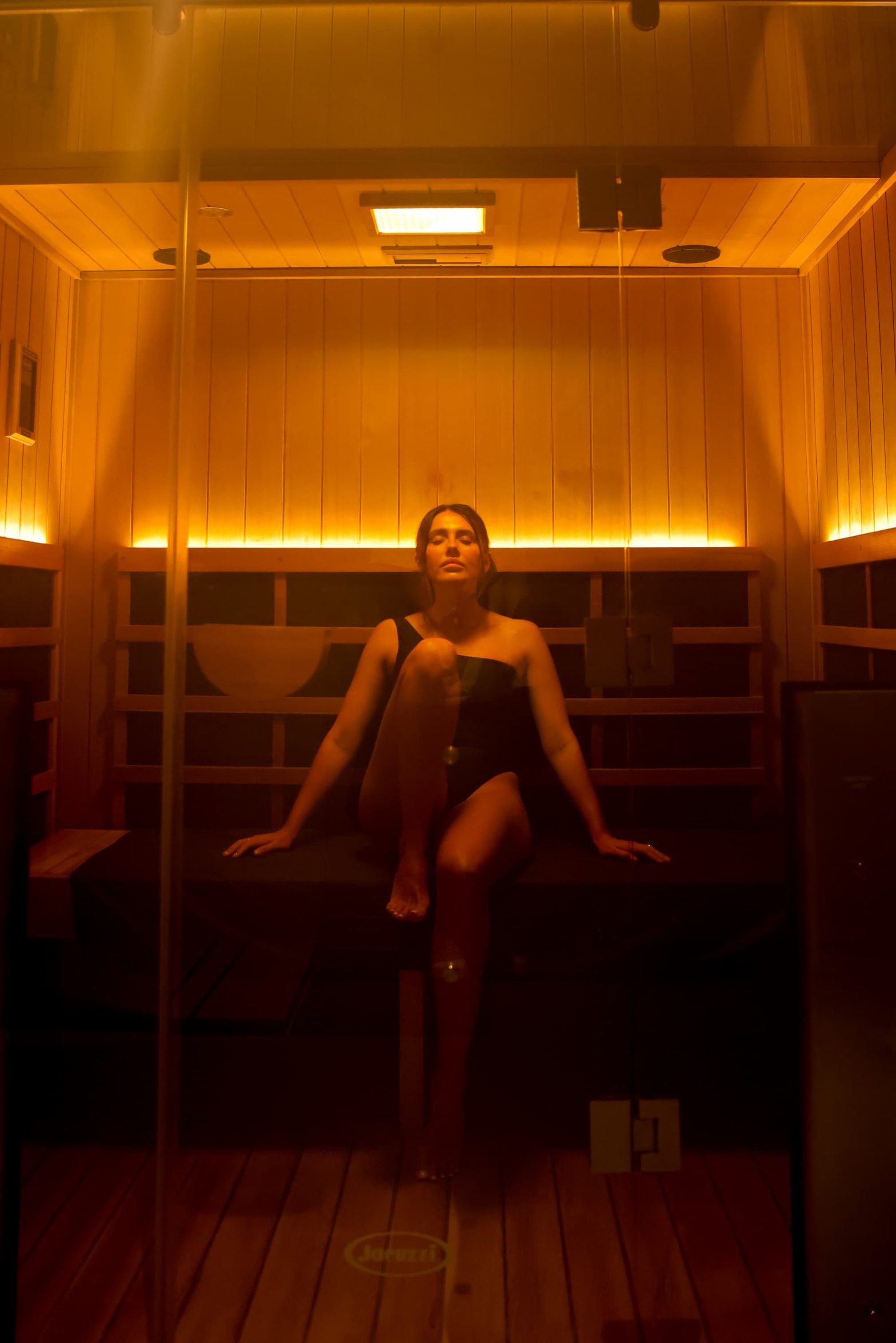It’s estimated that 3 million Australians are living with anxiety, making it the most common mental health condition in the country. 1 in 4 people will experience anxiety at some stage in life, but that doesn’t mean you need to live with it. There are several ways you can decrease stress and anxiety, including lifestyle changes, talking to loved ones, and journaling. There are also therapies you can try, such as ice baths, hyperbaric oxygen therapy chambers, red light therapy, and many more. Keep reading to learn more about managing stress and anxiety.
Understanding Stress And Anxiety
Stress and anxiety are two separate things, but they often come hand in hand when it comes to active stressors in your life. Stress is any demand placed on your brain or body, and it’s often triggered by a certain scenario or event that makes you feel frustrated or nervous.
On the other hand, anxiety is the feeling of worry and fear. It can occur as a reaction to stress, but it can also be triggered by nothing in particular.
Stress and anxiety aren’t always a bad thing, as some people find them helpful motivators to push through daunting tasks. However, without managing your stress and anxiety, you might find that it takes a toll on your mental health.
Signs You Need To Decrease Your Stress And Anxiety Levels
You know your body and mind best, so you’ll be able to determine when it’s getting to the point of you need to decrease your stress and anxiety levels. Both of these emotions can wreak havoc on your physical and mental health, so ideally, you should keep them as low as possible to prevent them from negatively impacting other areas of your life.
Here are the signs and symptoms of stress so you know what to look for:
- Muscle tension
- Dizziness
- Digestive issues
- Difficulty sleeping
- Anger or irritability
- Headaches
- Increased sweating
- Restlessness
- Feelings of being overwhelmed
- Changes in appetite
- Increased heart rate
Anxiety tends to come with a lot of the same symptoms as stress, but with a few extras you might notice, including:
- A feeling of impending doom
- Brain fog
- Tingling or numbness
- Quickened heart rate
Stress tends to be a more long-term response to stressors while anxiety comes on thick and fast, often taking people by surprise when it first hits.
Decreasing Stress And Anxiety Levels Methods
Many of us will experience stress and anxiety every now and then, and there are plenty of ways you can cope to make your symptoms more manageable. Your body will often react differently than others, so some methods that help for them may not help for you, and vice versa. Make sure you listen to your body to see how it’s reacting to each coping strategy to work out what’s best for you.
Here are some popular techniques you can try to decrease stress and anxiety:
- Meditation and breathwork
- Limit caffeine and alcohol intake
- Get enough sleep, and not going to sleep too late
- Regular exercise
- Set aside time for hobbies and things that bring you joy
- Journalling or keeping a diary for your feelings
- Make sure you have a support system in place by opening up to your loved ones about how you’re feeling
Equipment At TH7 That Can Help Decrease Stress And Anxiety Levels
Along with the coping strategies we mentioned above, there are also several therapies you can partake in to decrease stress and anxiety levels. TH7 offers plenty of them, including:
Ice Baths
Immersing your body in cold water might not sound like the most relaxing thing to do, but reducing your temperature so drastically can significantly impact stress levels thanks to the stimulation of noradrenaline. This is a key player in mood regulation, so you should be able to feel your emotions levelling out after an ice bath.
Increased research has seen the rise of the Wim Hof Method, which is a combination of pranayama-like breathing and cold exposure to reduce stress. Studies have shown that this method yields a large positive impact, making it a simple yet effective means to improve mental well-being for a wide range of people.
Infrared Saunas
Infrared saunas can offer plenty of stress relief thanks to the warmth, seclusion, and higher body temperature can all help reduce muscle tension and stress. It can also improve circulation and stimulate the release of endorphins, which can counter feelings of stress and anxiety.
A study of type 2 diabetes patients found that, when treated with infrared therapy three times a week for three months, showed a psychosocial impact of the intervention along with increased quality of life, including reduced stress.
Traditional Saunas
Traditional saunas are also excellent for stress relief, offering a safe space for you to enjoy the warmth and seclusion without your worries finding you. Frequent use of traditional saunas can promote muscle relaxation, improve circulation, and encourage the release of endorphins.
A study published in 2012 followed 25 healthy young adults who were asked to sit in a heat stress chamber both with and without heat for 30 minutes on separate days. The results showed that whole-body heat stress can trigger some of the same physiological responses that exercise offers. As exercise can release endorphins and help relieve feelings of stress and anxiety, this research indicates that traditional sauna use can do the same.
Contrast Therapy Pools
Contrast therapy offers the best of both worlds to the therapies we’ve looked at above. You’ll switch between hot and cold temperatures to shock your body into stimulating its natural healing processes, letting you enjoy the stress relief that both these extremes offer. Many have mentioned that contrast therapy has proven to be highly beneficial during stressful situations to alleviate anxiety.
Steam Rooms
Steam rooms can reduce cortisol levels, which is the hormone released in response to stress. This means that as your cortisol levels decrease, you might feel a greater sense of control and relaxation, preventing stress from turning into anxiety.
One research review highlights that people in high-stress occupations, such as first responders, might be able to reduce their stress levels with frequent sauna use. There is little research on steam rooms specifically, but as traditional saunas are very similar to steam rooms, the results may extend to steam rooms, too.
Full Body Cryotherapy Chambers
Full-body cryotherapy chambers immerse the body in extremely cold temperatures, usually around -80 to -110 degrees C, to activate the sympathetic nervous system, otherwise known as the body’s stress response. This has a host of benefits, including relieving stress and anxiety.
Research has shown a clear correlation between exposure to cold water and several health benefits. Likewise, heat stress has also been shown to offer better mental clarity and reduce stress levels. However, studies also show that chronic heat stress can lead to increased stress, anxiety, and cognitive impairment, so blending hot and cold therapies can help achieve the maximum benefit without going to extremes.
Hyperbaric Oxygen Therapy Chambers
Hyperbaric oxygen therapy chambers (HBOT) increase the air pressure around you to 1.35 times greater than normal air pressure, which is equivalent to being around 12 feet below sea level. This heightened pressure increases the amount of oxygen that’s diffused into the blood plasma by up to 50%, which can offer plenty of benefits.
One case report on the effect of HBOT on psychological state and wound healing found that a patient who undertook 20 once-daily 120-minute sessions of HBOT resulted in complete wound remission as well as an improved quality of life. The patient noticed lower levels of anxiety and depression, indicating that while HBOT has known therapeutic effects on wound healing, it might also have a substantial effect on psychosomatic mechanisms.
Red Light Therapy
Red light therapy uses near-infrared light to expose the whole body to the red light, specifically targeting cells to give them a boost of energy and benefit the entire body.
Despite the relatively young age of red light therapy, there have already been plenty of pilot studies done on it in regard to stress and anxiety. One particular study used 15 participants suffering from generalised anxiety disorder to show that transcranial photobiomodulation with near-infrared light, which comes from red light therapy, is a promising alternative treatment for anxiety disorders. While larger studies are certainly needed, the initial findings are promising!
Final Thoughts
Stress and anxiety are incredibly common and often can be managed at home by removing the stressor from your life. You might be able to reduce stress by getting more sleep, talking to loved ones to improve your support system, and more. However, you might also find certain therapies and TH7 equipment beneficial, such as ice baths, saunas, and red light therapy. Luckily, there have been plenty of studies conducted on therapies for stress and anxiety, so there are plenty of options for you to try and find what works best for you.




